The GWM Cannon range received a facelift in 2025. Well, almost.
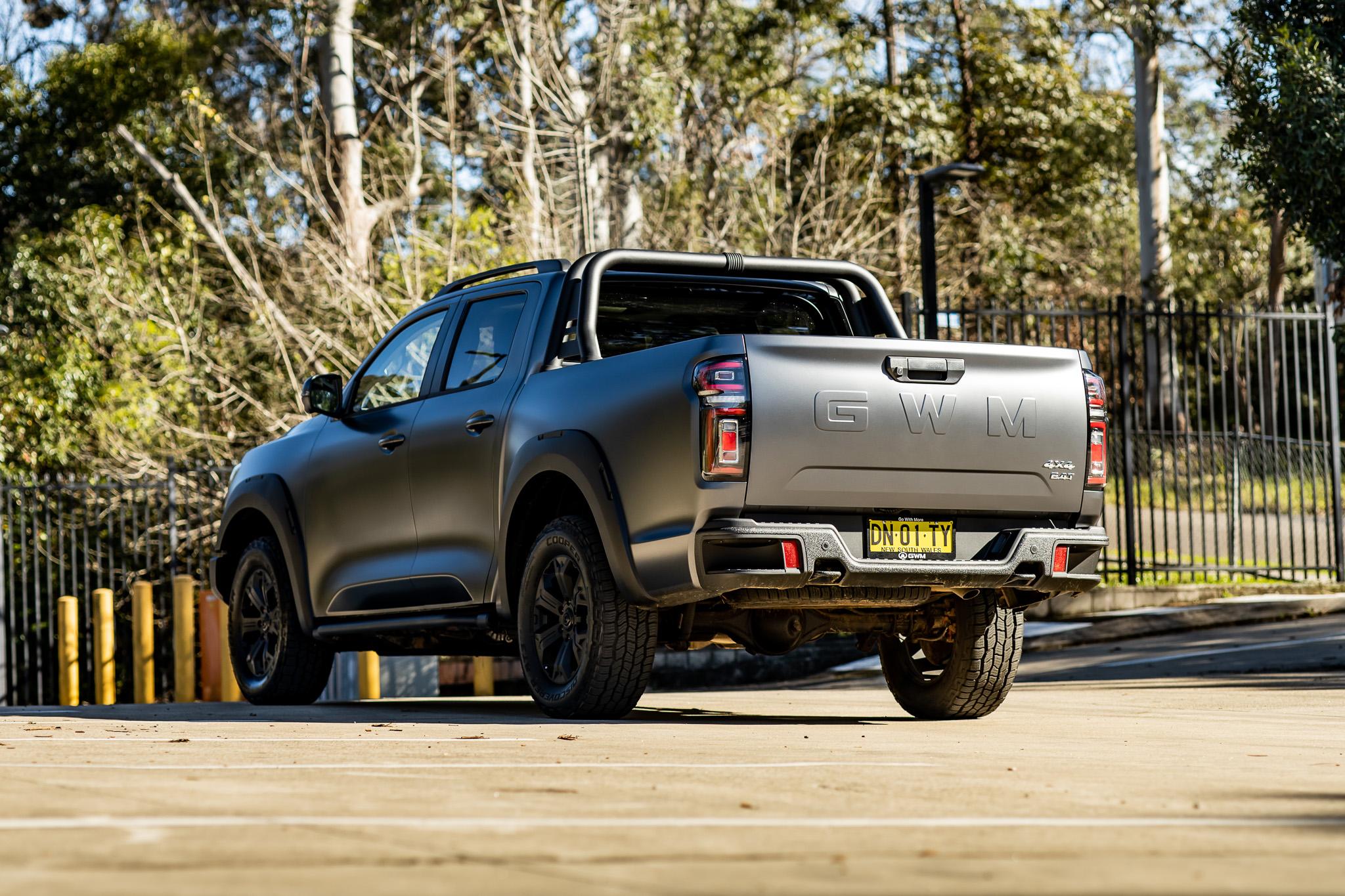
While other cheaper versions of this Chinese ute got a new front-end design, the range-topping rough-and-ready XSR didn’t get the revamped exterior.
That might be fine if you prefer the old look, but it is a bit peculiar to leave the most expensive version looking outdated, if you ask me.
If that doesn’t matter to you, then you’re going to like what this model has to offer. Because for the cash, it’s compelling.
How much does the GWM Cannon cost?
There a few versions of the Cannon available, and the XSR is the flagship 4×4 dual-cab.
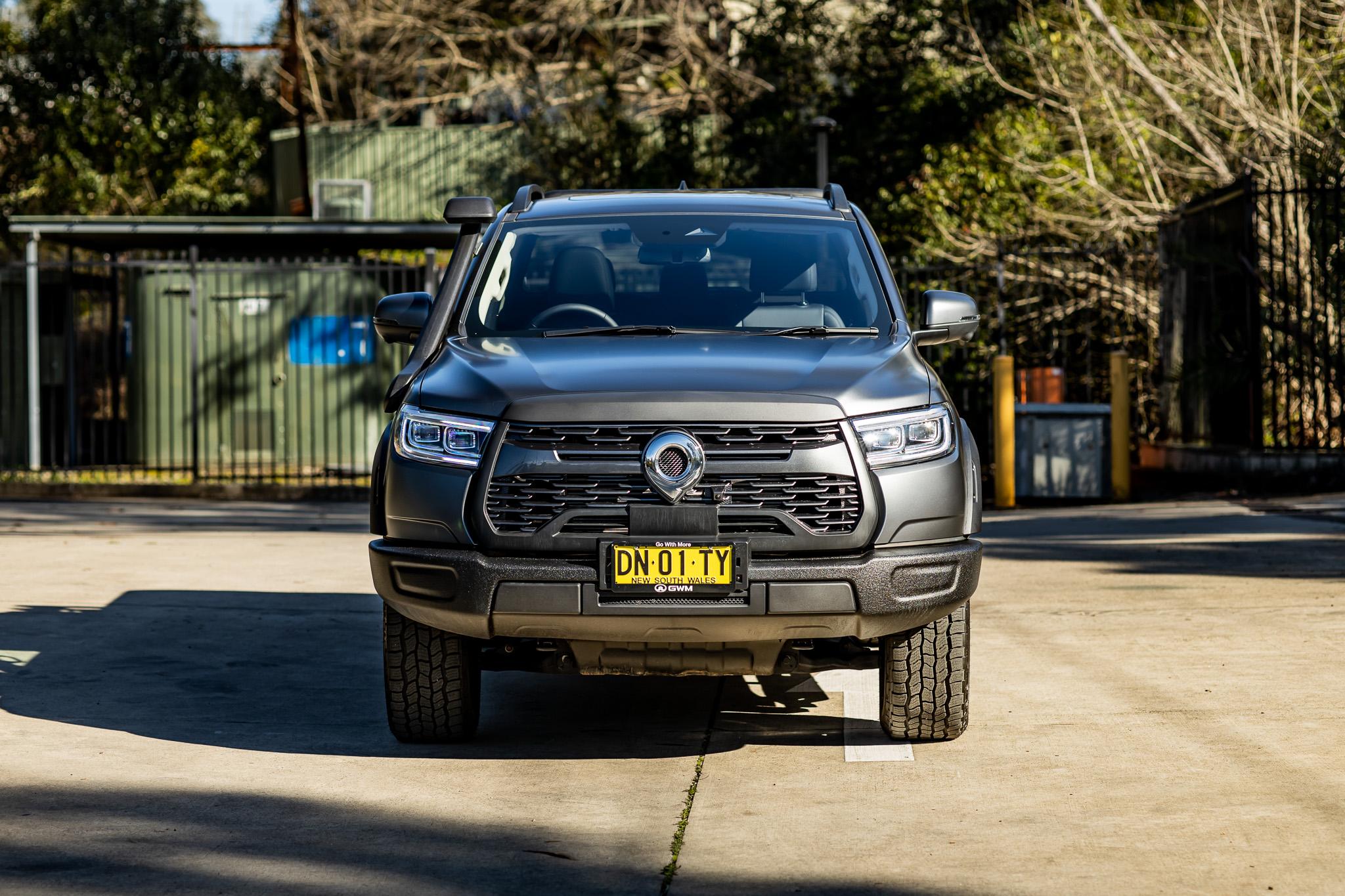
| Model | Drive-away price |
|---|---|
| 2025 GWM Cannon Premium 4×2 single-cab/chassis | $36,490 |
| 2025 GWM Cannon Premium 4×4 dual-cab pickup | $40,490 |
| 2025 GWM Cannon Lux 4×4 dual-cab pickup | $42,490 |
| 2025 GWM Cannon Lux 4×4 dual-cab/chassis | $43,490 |
| 2025 GWM Cannon Ultra 4×4 dual-cab pickup | $45,490 |
| 2025 GWM Cannon Vanta 4×4 dual-cab pickup | $47,490 |
| 2025 GWM Cannon XSR 4×4 dual-cab pickup | $51,990 |
To see how the GWM Cannon stacks up against its rivals, use our comparison tool
What is the GWM Cannon like on the inside?
While it might not have had the glow-up exterior redesign like the cheaper Cannon models have, the interior has been entirely overhauled to make it look and feel more modern.
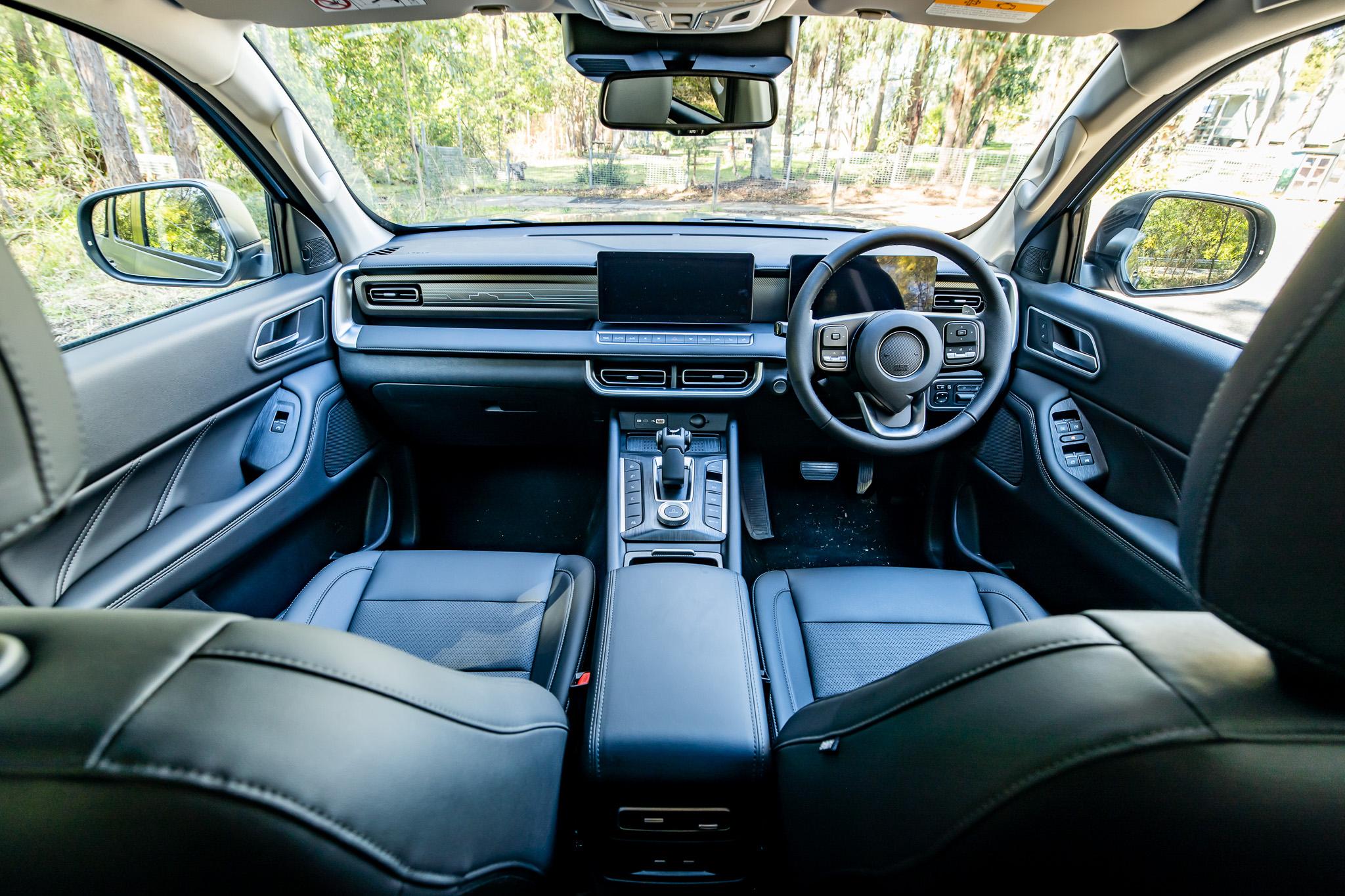
As a result, it scores a redesigned steering wheel, new-look dashboard layout, and the removal of the cowl over the driver’s digital instrument cluster, which might be annoying for outback drivers at some times of day, but in general terms it really is a significant improvement compared to before.
The steering wheel moves from a hard four-spoke unit to a softer, more Tank-like three-spoke tiller, and the controls are simpler to learn, too.
The dashboard brings a new 12.3-inch touchscreen media system, which is far more tech-focused and also better to use, plus it has wireless Apple CarPlay and Android Auto, too. The screen is simpler to learn, but has some quirks, like not allowing you to use the drop-down menus when you’re using CarPlay.
On the home menus, there are plenty of adjustments to be made on screen. Thankfully, though, there is an array of buttons for the media system, which were even better on the last model (it had dials for the air-con system and more buttons than this one).
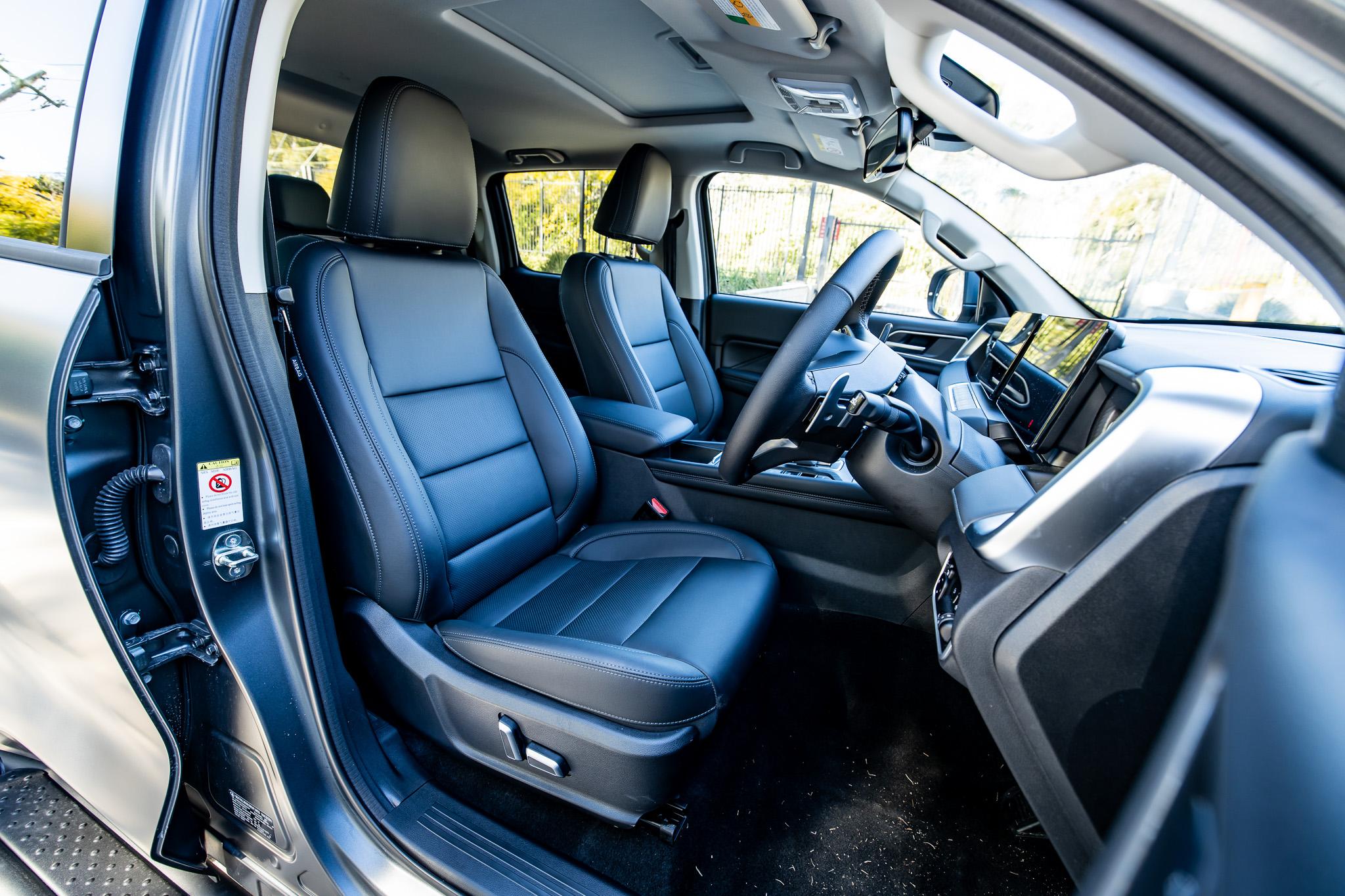
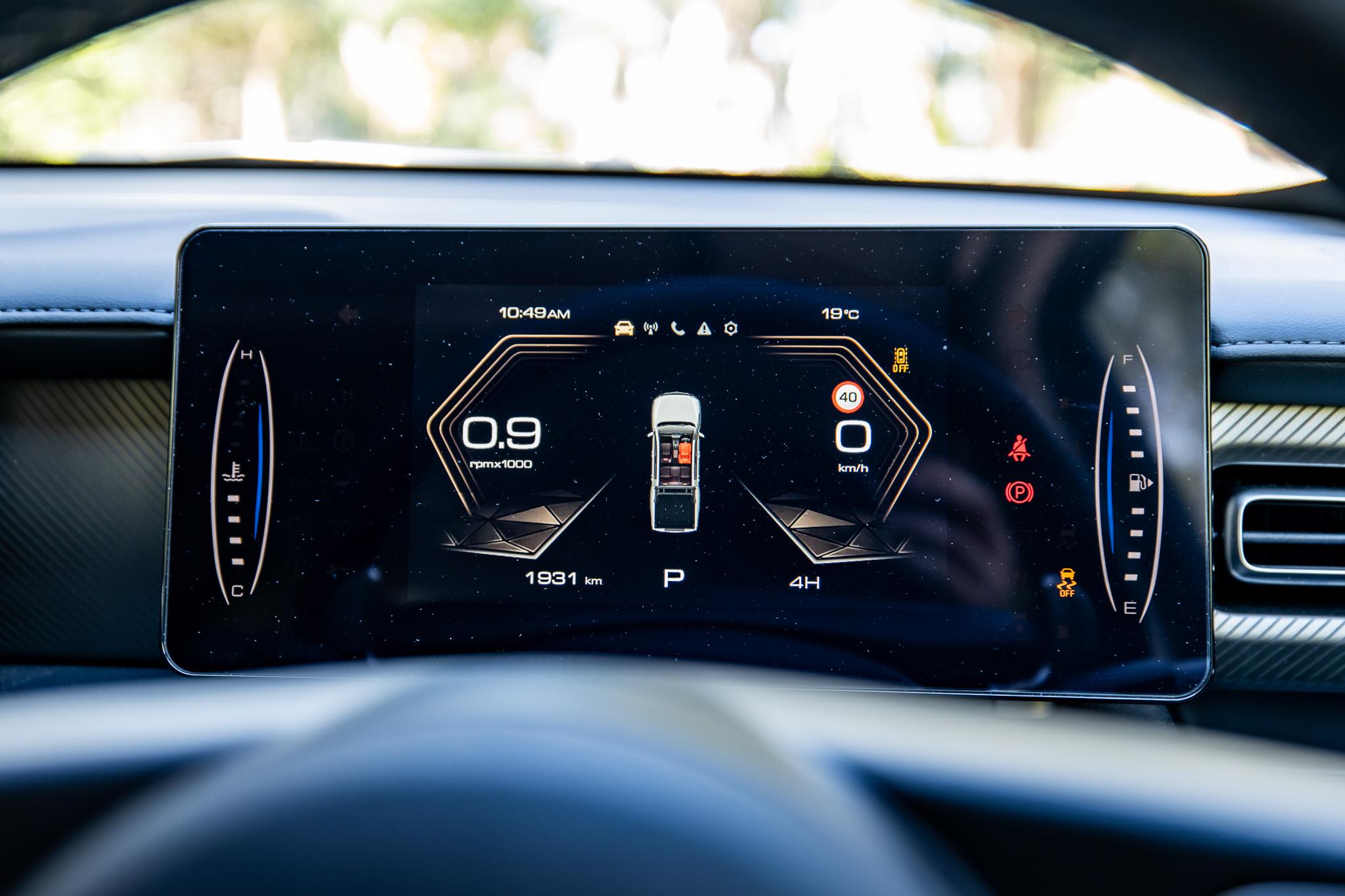
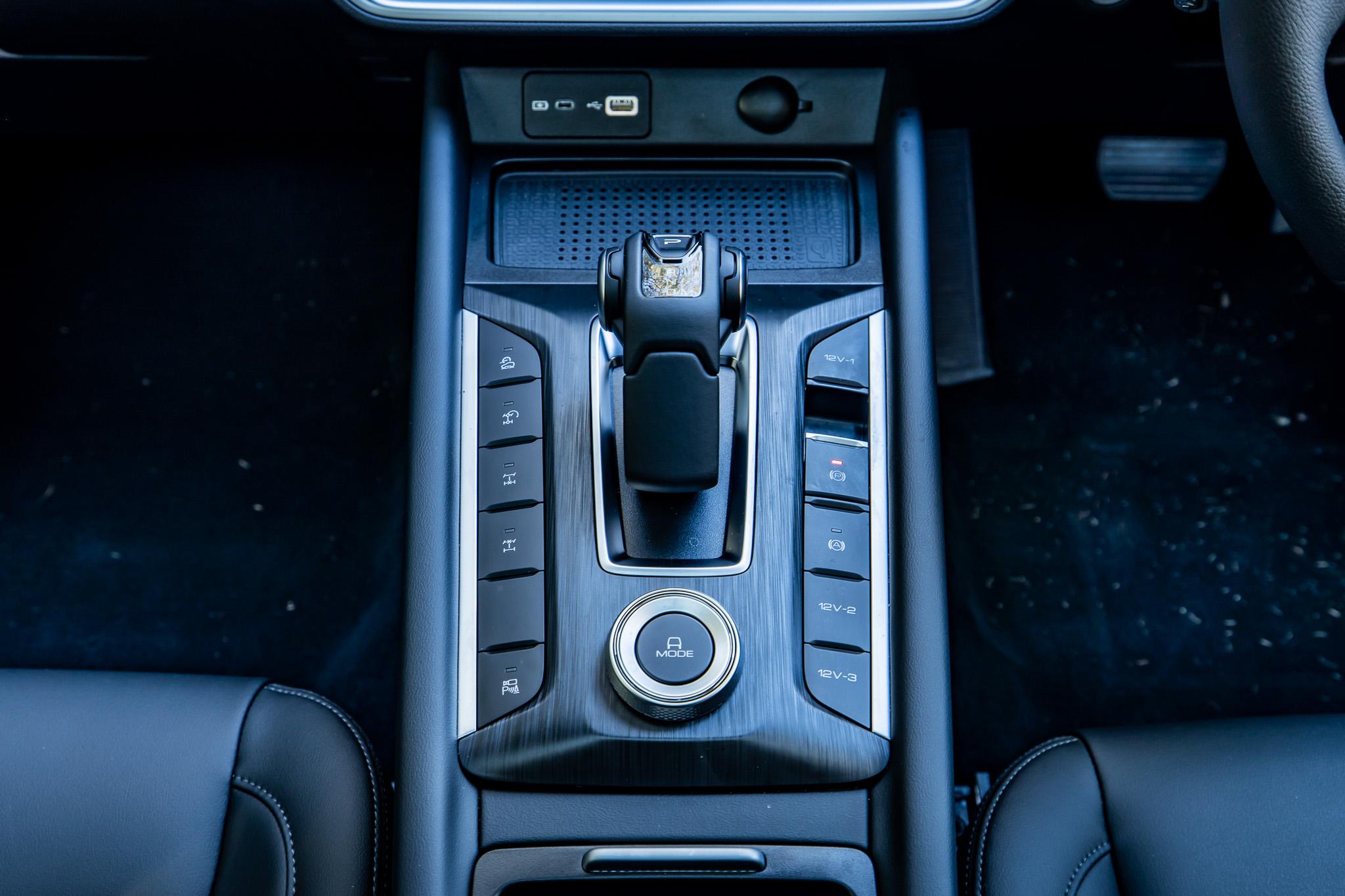
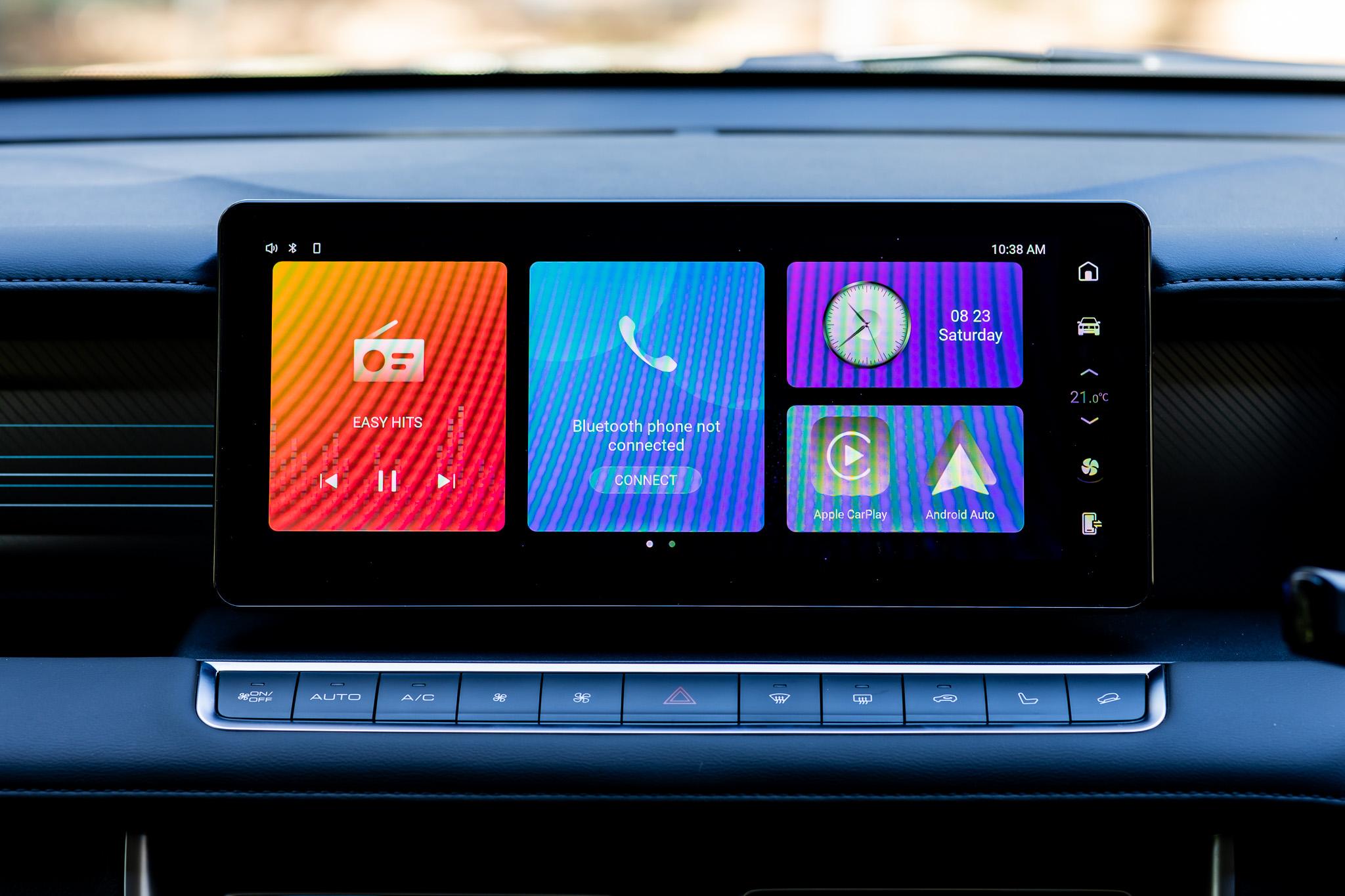
Those buttons are mostly good, though, and thankfully there are demisters, recirc, and seat heating/ventilation control quick switches there. You still have to adjust the seat settings on screen, but it means the screen should be easier to get to (again, though, the software could be better, as I found that it wouldn’t jump to the seat screen when in CarPlay mode).
So, learn the idiosyncrasies of the screen (and you’ll need to if the safety systems annoy you, like they did me), and you’ll go a long way to finding the interior of the updated Cannon XSR a pleasant place to be.
Those heated, ventilated and electric-adjustable front seats are comfortable and supportive. And there’s a host of storage options around the cabin, including a tray in front of the passenger, plus a glovebox, centre console storage, wireless phone charger, good cupholders and big pockets in the doors for bottles.
The back seat is roomier than in some rivals, with a generous amount of legroom, headroom and shoulder space. Kneeroom and foot space is only tight for middle-seat occupants.
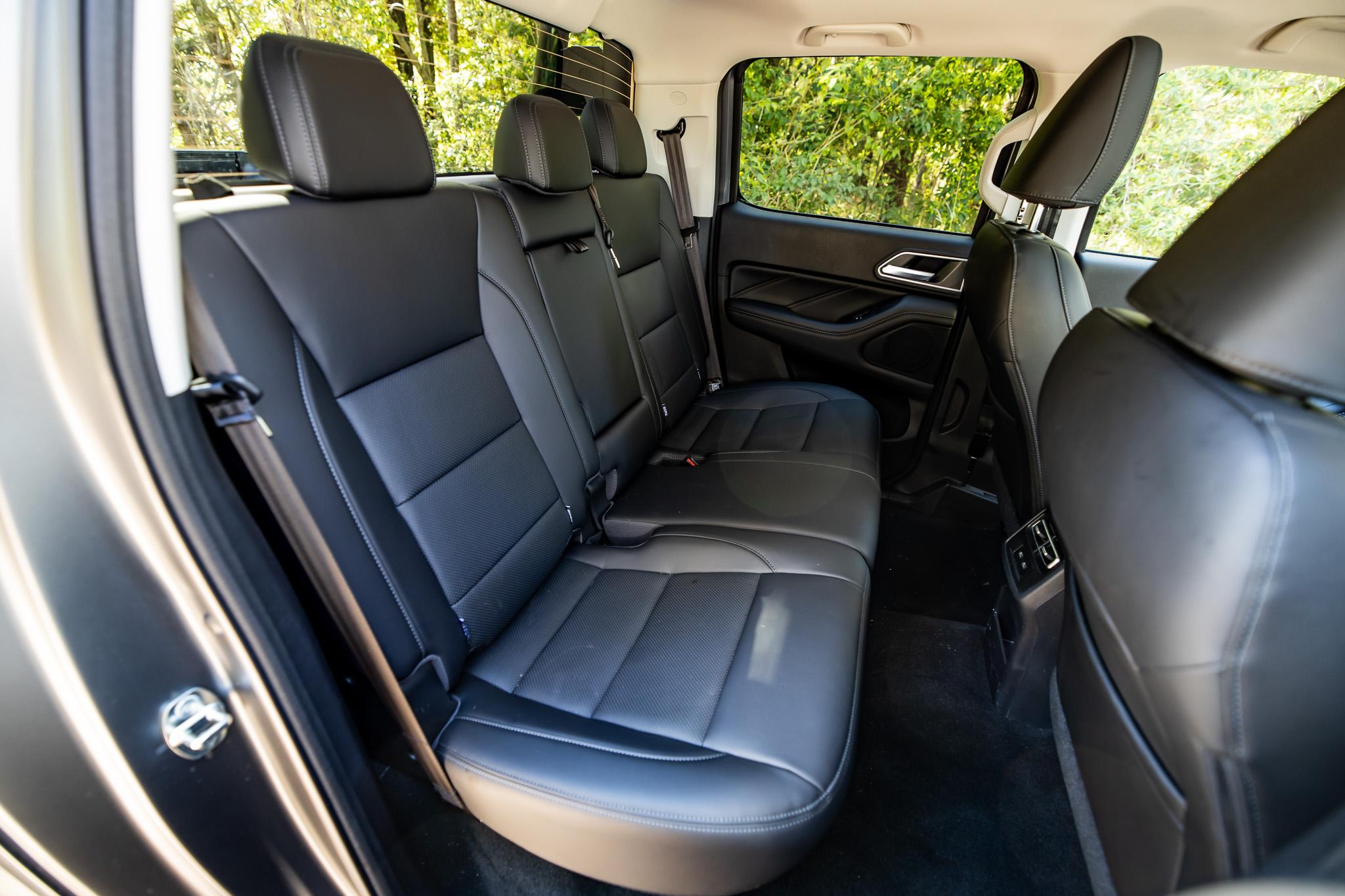
It’ll fit three adults (so long as they’re not bodybuilders) and, unlike some of the more fancied dual-cabs, it has proper top-tether attachment hooks behind the seat for child seats, rather than the rubbish solution of a strap-through strap hook. There are ISOFIX points in the window seats, too.
The back seat scores directional air vents, USB charging, map pockets, and a flip-down armrest with cupholders, plus handles to help you haul yourself in, overhead grab handles to hang onto, and soft padded parts on the doors to rest your arms on, too.
When it comes to the cargo zone, nothing has changed. So you’re still getting a spray-in tub liner, that super-handy pop-out step ladder, bumper step-points to get in and out of the tub, a sports bar (if you like those things), and central locking for the tailgate (which is great if you want to fit a canopy). All the tub dimensions are listed below.
There are a few anchors to tie things down to, and while it isn’t wide enough between the wheel-arches to fit an Aussie (1165mm square) pallet, it’ll fit a fair bit in. Be mindful of the payload limitations, though. I’ve called them out in the next section.
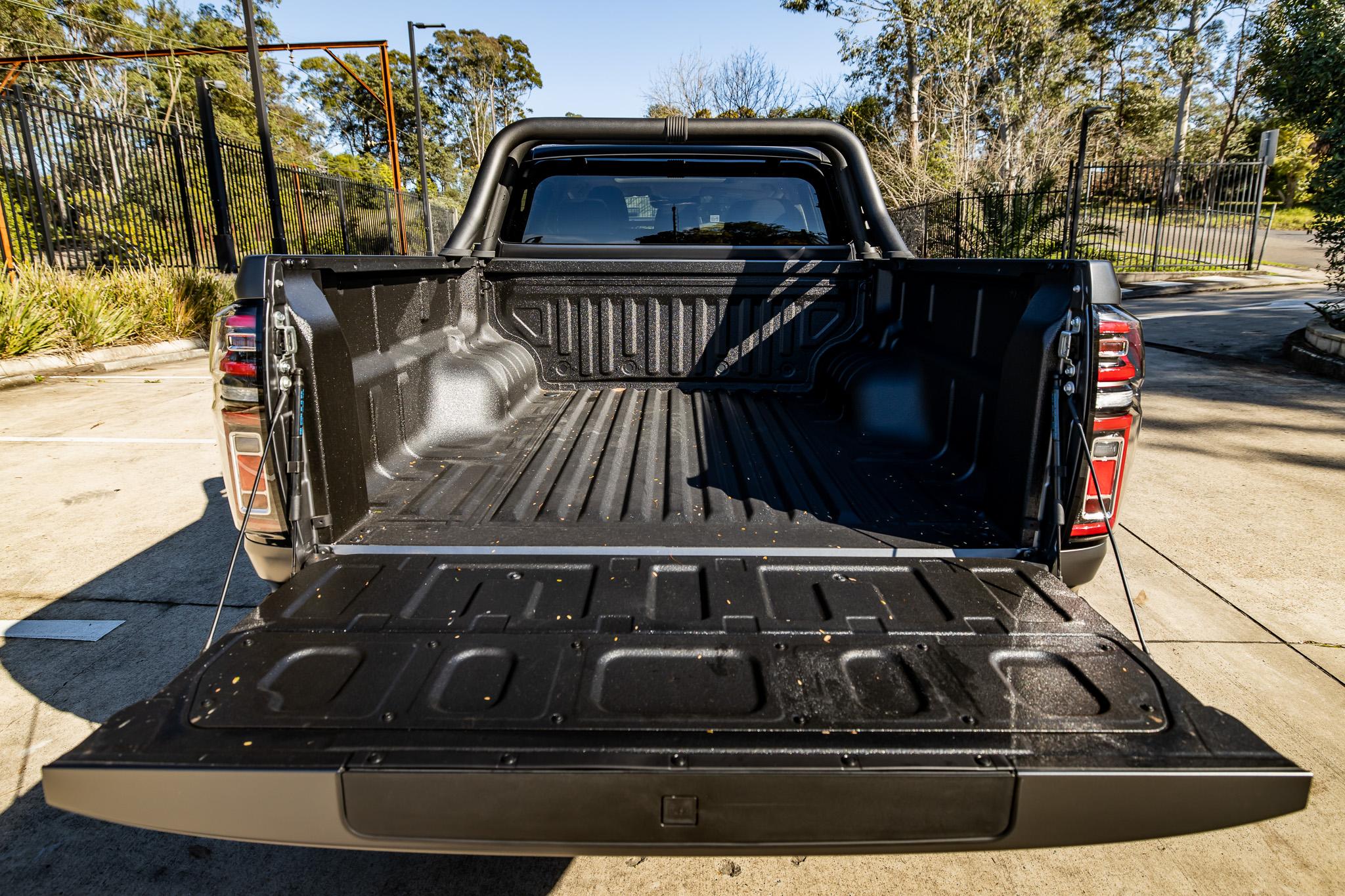
| Dimensions | GWM Cannon XSR |
|---|---|
| Length | 5439mm |
| Width | 1958mm |
| Height | 1893mm |
| Wheelbase | 3230mm |
| Tub length | 1520mm |
| Tub width | 1520mm |
| Tub depth | 540mm |
To see how the GWM Cannon stacks up against its rivals, use our comparison tool
What’s under the bonnet?
If you want all the details on the full range of variants, including powertrain and dimension differences, check out this article.
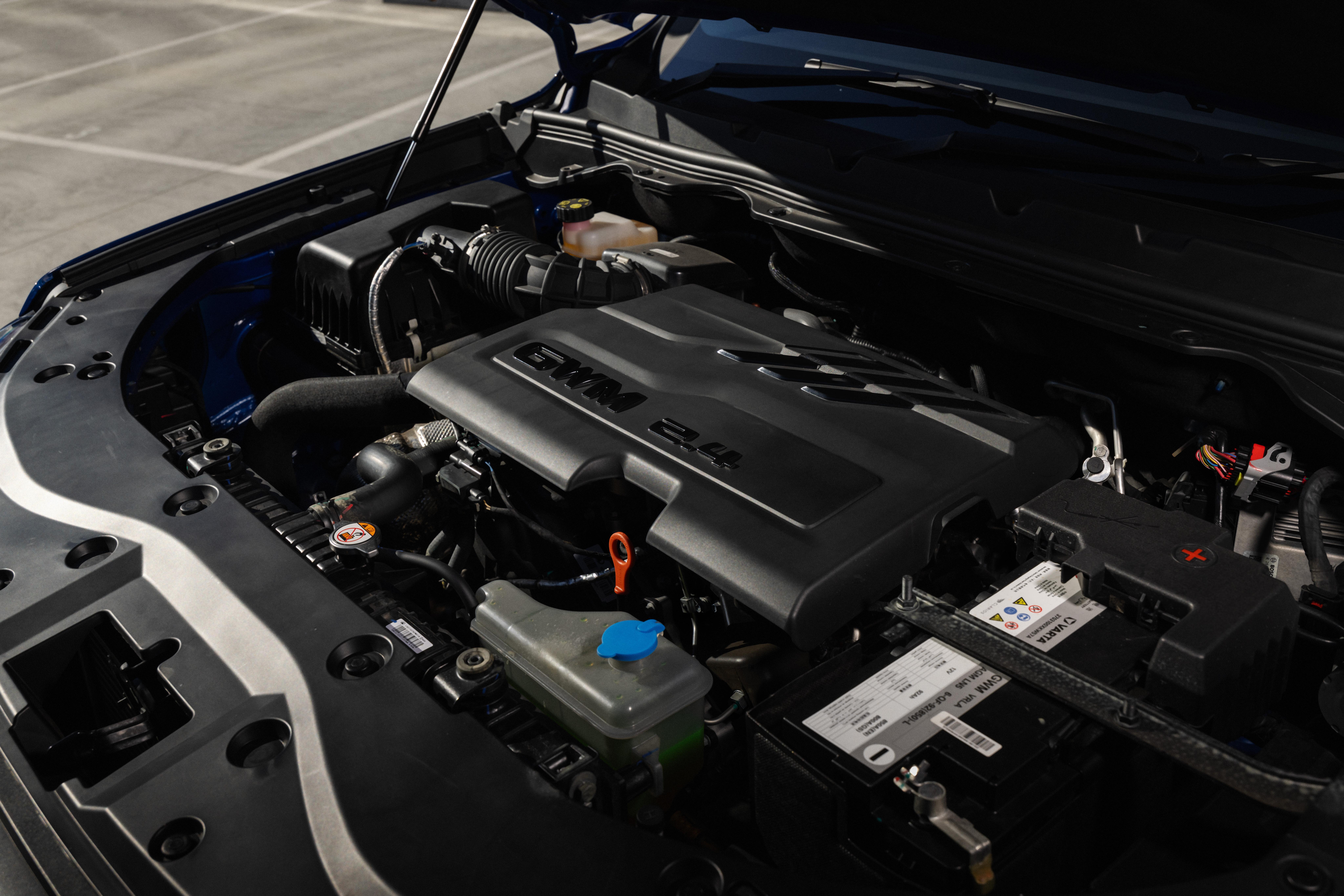
| Specifications | GWM Cannon XSR |
|---|---|
| Engine | 2.4L 4cyl turbo-diesel |
| Power | 135kW |
| Torque | 480Nm |
| Transmission | 9-speed automatic |
| Drive type | Four-wheel drive |
| Fuel economy (claimed) | 8.4L/100km |
| Fuel economy (as tested) | 9.4L/100km |
| CO2 emissions (claimed) | 221g/km |
| Fuel tank | 78L |
| Emissions standard | Euro 5 |
| Kerb weight | 2330kg |
| Payload | 875kg |
| Braked towing capacity | 3500kg |
| Gross vehicle mass (GVM) | 3205kg |
| Gross combination mass (GCM) | 6300kg |
On my test – which I’m sorry to say, didn’t include any off-roading (blame bacteria from daycare sharers for that) – I saw a return of 9.4L/100km.
That’s better than I recorded in my last drive of the Cannon-XSR with the smaller engine and eight-speed auto (it was registered 10.1L/100km), so the bigger engine and extra ratio clearly has a real-world efficiency benefit.
To see how the GWM Cannon stacks up against its rivals, use our comparison tool
How does the GWM Cannon drive?
The big change to the drive experience between the pre-update model and this one, obviously, is the bigger and more powerful new engine.
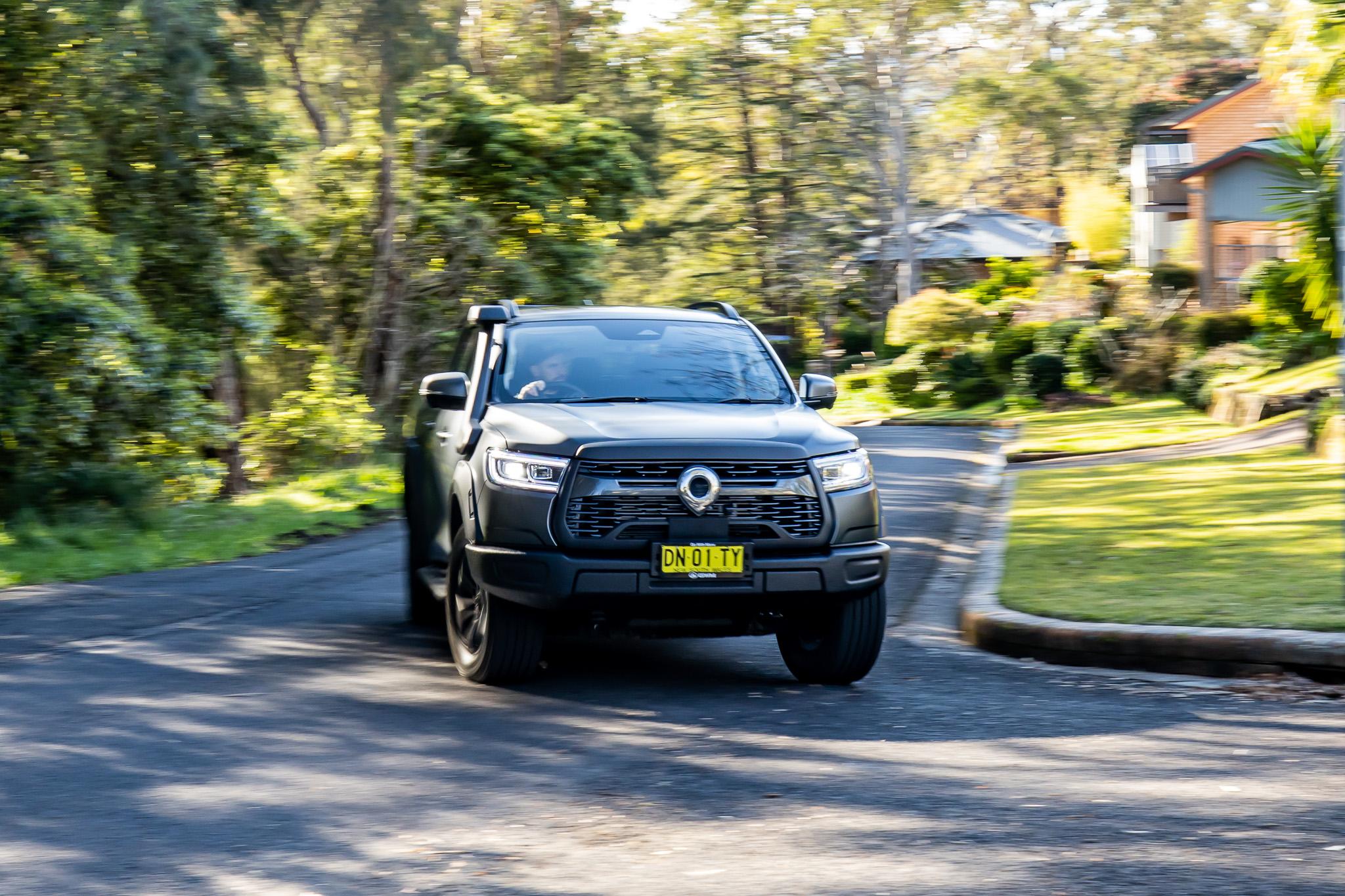
It does make a marked difference in terms of the feeling of gruntiness. We’re talking 12.5 per cent more power and 20 percent more torque, so it’s not a small bump.
And it’s noticeable in daily driving. It feels more potent when you’re already moving, but there is some lag to contend with from a standstill.
The new nine-speed auto adds an extra ratio compared to the previous powertrain, too, but it isn’t quite as good as it could be in some instances.
It has a tendency to hang on to gears longer than you might expect in light throttle situations, rather than upshifting to the next gear. And I also had a few moments of confusion from the transmission at a mix of speeds, where the gearing logic seemingly wasn’t quite across what needed to happen next.
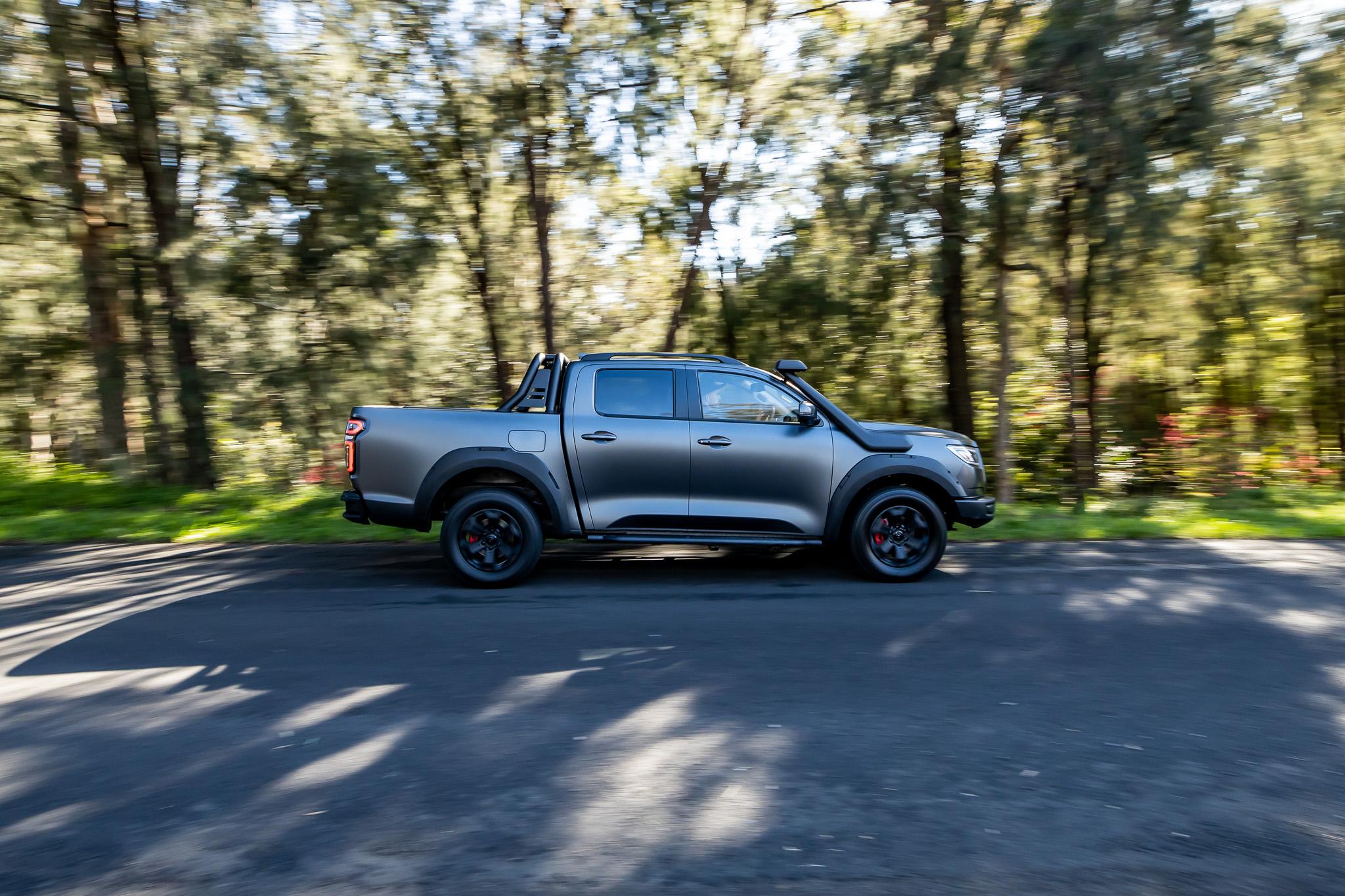
That in itself isn’t a deal-breaker in my opinion, because I found it to be otherwise very agreeable from a powertrain perspective.
I must reinforce, though, that I didn’t get a chance to do off-road testing (I was sick!) so these findings relate to how it drives in 2H (high-range RWD) only. There is 4H (high-range 4WD) and low-range (4L) as well, but again… the germs from preschool had other plans for me over this week of testing. Paul has done an off-road test in the previous XSR, and there are videos of the new one hitting up Beer O’Clock Hill if you’re keen to see it in action.
The rest of the drive experience is largely the same as the previous XSR, with the off-road-focused tyres making it a bit sloppy feeling in corners, and it’s got a huge turning circle too (and it feels a tad heavier over the nose, which exacerbates that).
The ride comfort is pretty decent, and while it feels heavier than other examples of the Cannon range (it is, at 2273kg tare), it has a sure-footed balance to it in corners, once you get to grips with the feeling of the steering.
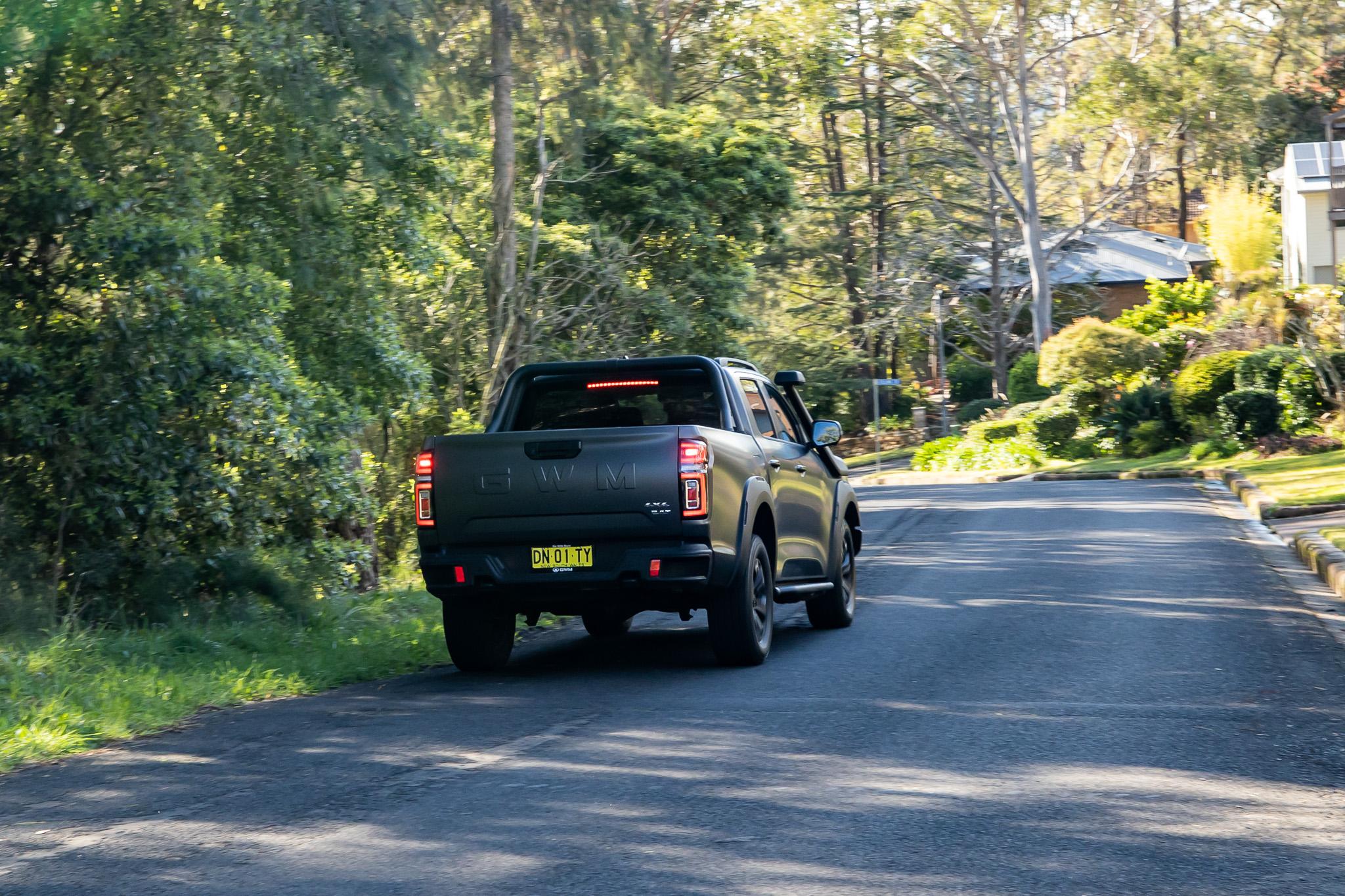
There’s a bit of wind noise and road noise to contend with, the latter caused by the more aggressive rubber of this model variant.
It’s no Ranger rival in terms of the overall driving experience, and dynamically it leaves a bit to be desired. But for the money, and with the equipment it has, it is better than respectable in terms of how it drives.
It’s just a shame the same can’t be said for the lane keeping assistance and driver monitoring systems. They’re both horrid – you’ll want to switch them off, and if you’re like me you’ll wanna switch off the traffic sign recognition bing-bongs, too.
| Off-road dimensions | GWM Cannon XSR |
|---|---|
| Track front and rear | 1580mm |
| Ground clearance | 228mm |
| Approach angle | 30 degrees |
| Departure angle | 26 degrees |
| Wading depth | 700mm |
To see how the GWM Cannon stacks up against its rivals, use our comparison tool
What do you get?
Here’s some further rationalisation for why you might want to step all the way up this particular ladder.
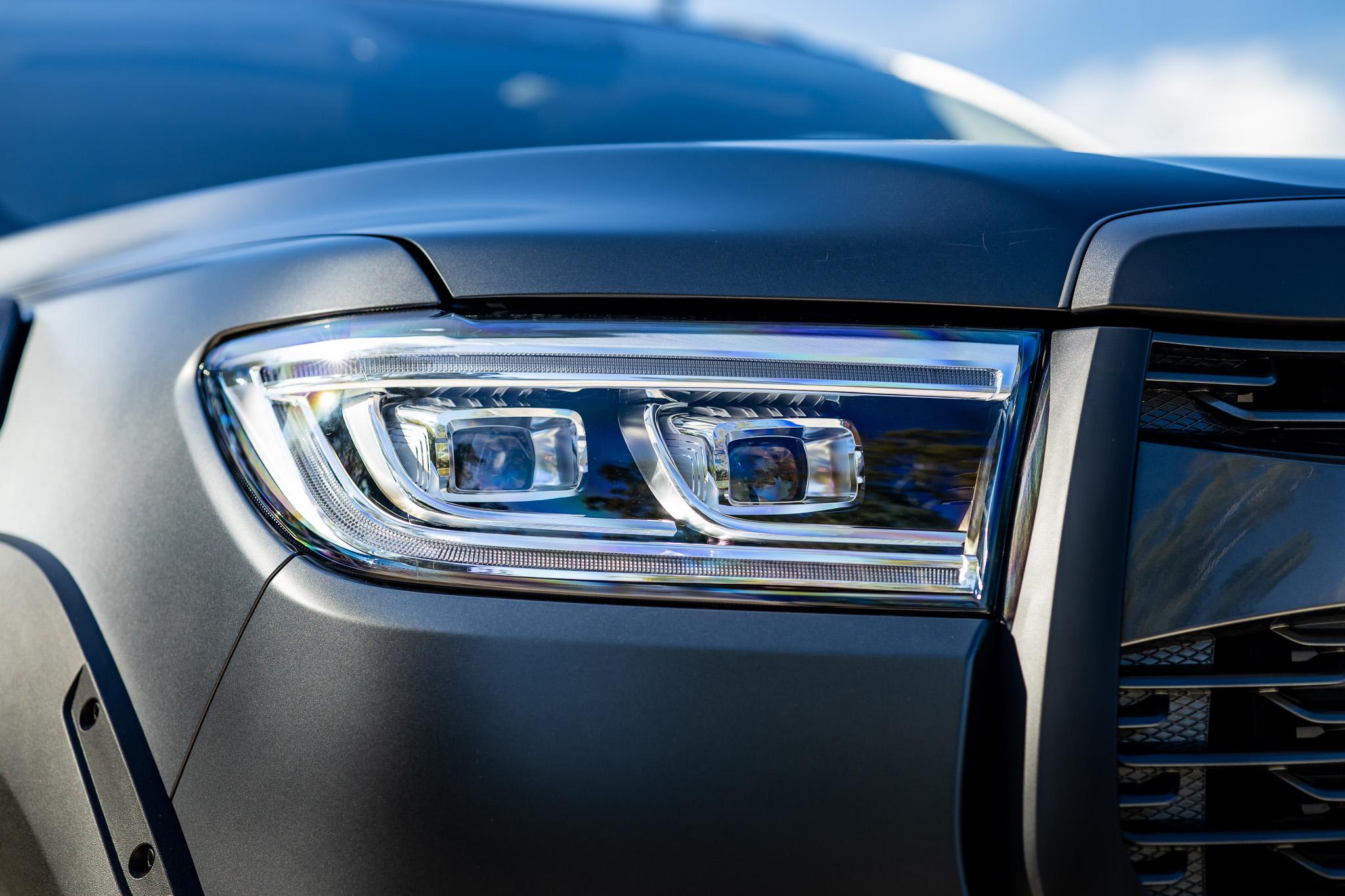

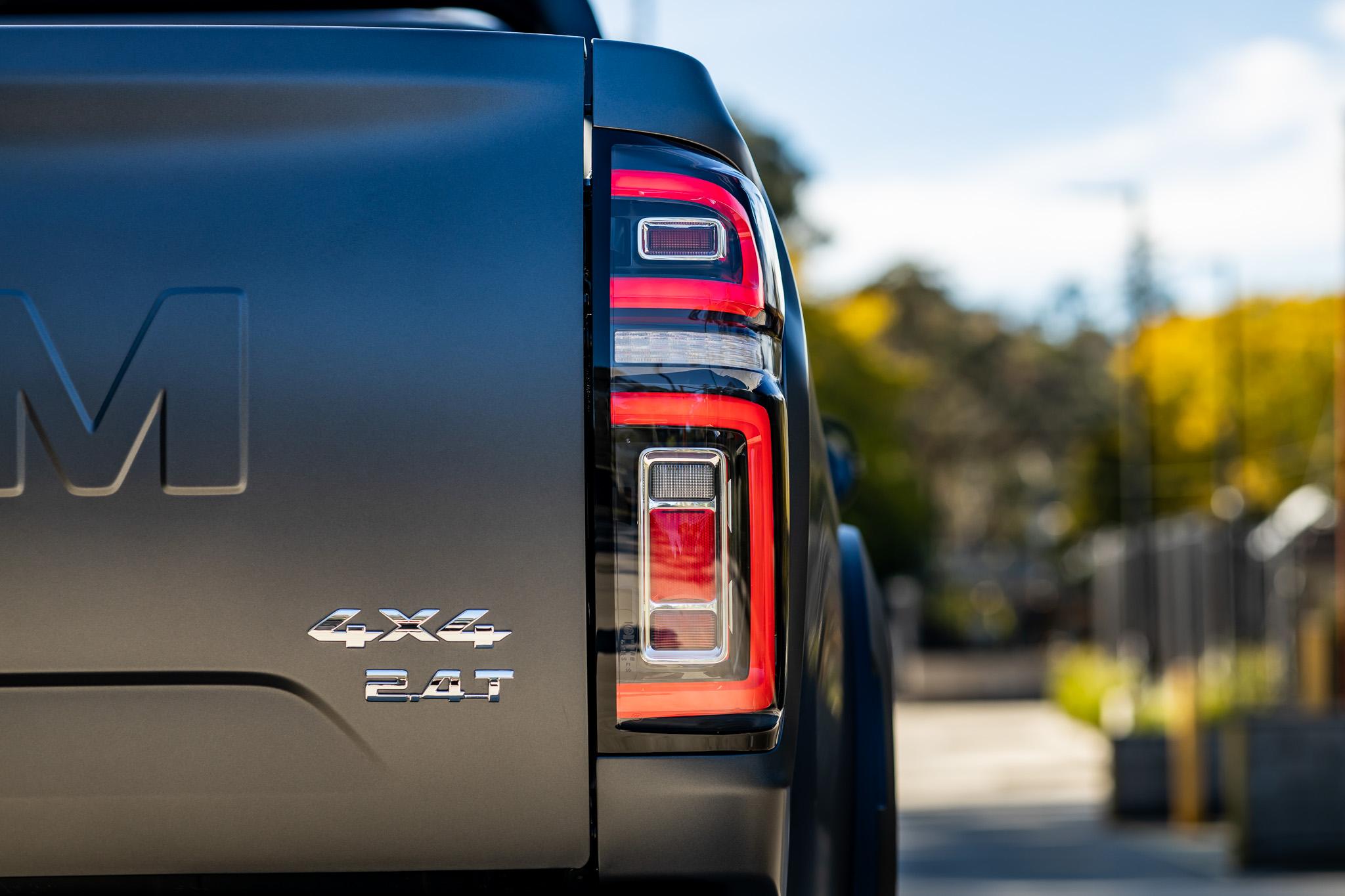
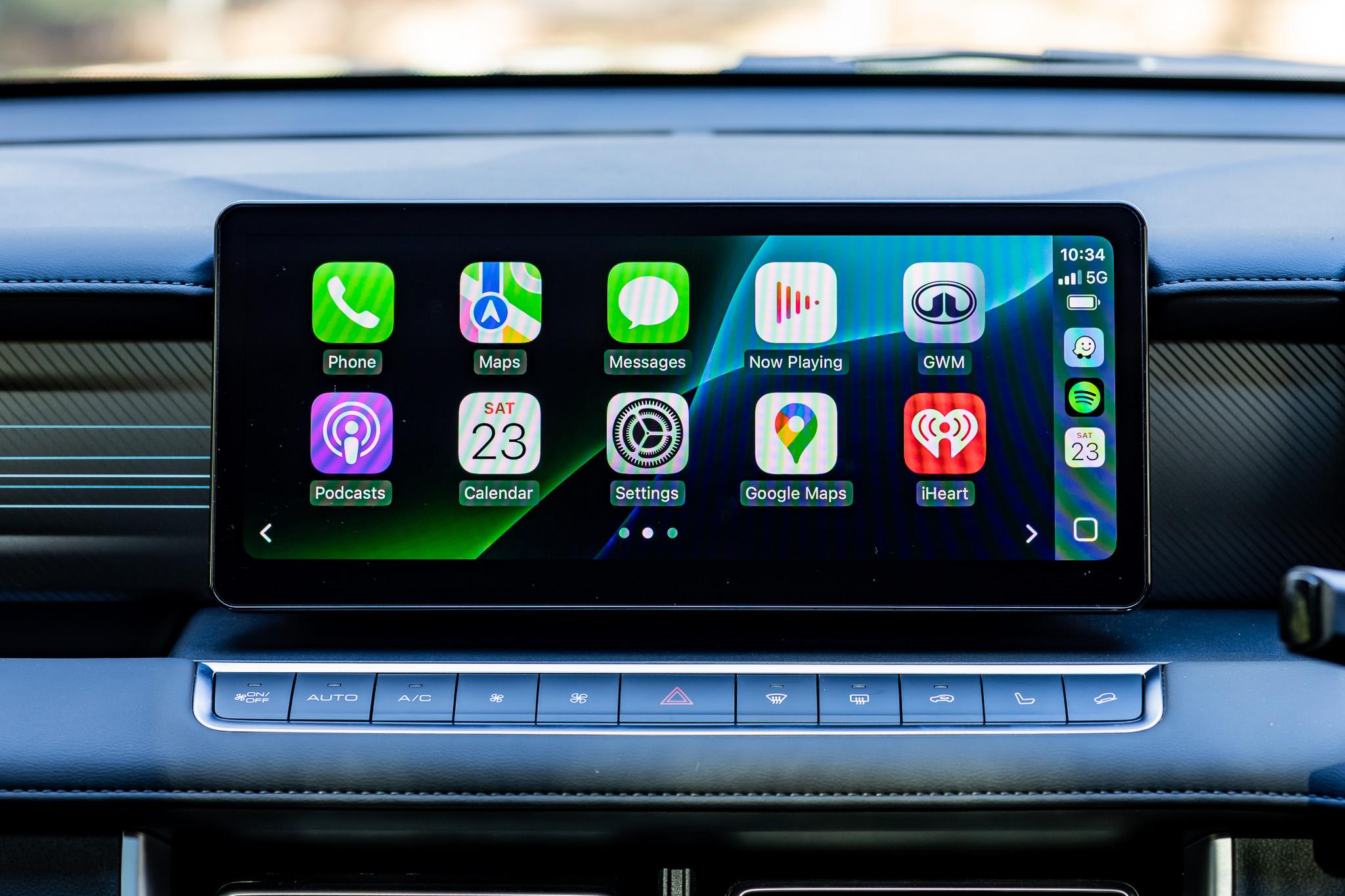
2025 GWM Cannon Premium equipment highlights:
- 18-inch alloy wheels
- Chrome sports bar
- Automatic LED headlights
- Power-folding side mirrors
- Spray-in bedliner (pickup only)
- Keyless entry
- Leatherette upholstery
- Leatherette steering wheel
- Six-way manually-adjustable driver’s seat
- Four-way power-adjustable passenger seat
- Single-zone climate control
- 7.0-inch digital instrument cluster
- 12.3-inch touchscreen infotainment system
- Wireless Apple CarPlay and Android Auto
- 3 x 12V power outlets
- USB-A front outlets
- Rain-sensing wipers
Cannon Lux adds:
- Wireless phone charger
- 6-speaker sound system
- DAB+ digital radio
- Front and rear USB-A, USB-C outlets
Cannon Ultra adds:
- Electric sunroof
- Rear privacy glass
- Leather-accented seats
- Heated and ventilated front seats
- Heated steering wheel
- 6-way power-adjustable driver seat
- 4-way power-adjustable front passenger seat
- USB port for dash cam
- Ambient lighting
- Auto-dimming rear-view mirror
Cannon Vanta adds:
- 18-inch black alloy wheels
- Black sports bar
- Matte black exterior trim
Cannon XSR adds:
- Off-road drive modes
- Front differential lock
- Body-coloured exterior trim
- Snorkel
To see how the GWM Cannon stacks up against its rivals, use our comparison tool
Is the GWM Cannon safe?
All variants of the GWM Ute – except for the Cannon XSR – were awarded a five-star ANCAP safety rating in November 2021. This rating carries across to the renamed Cannon.
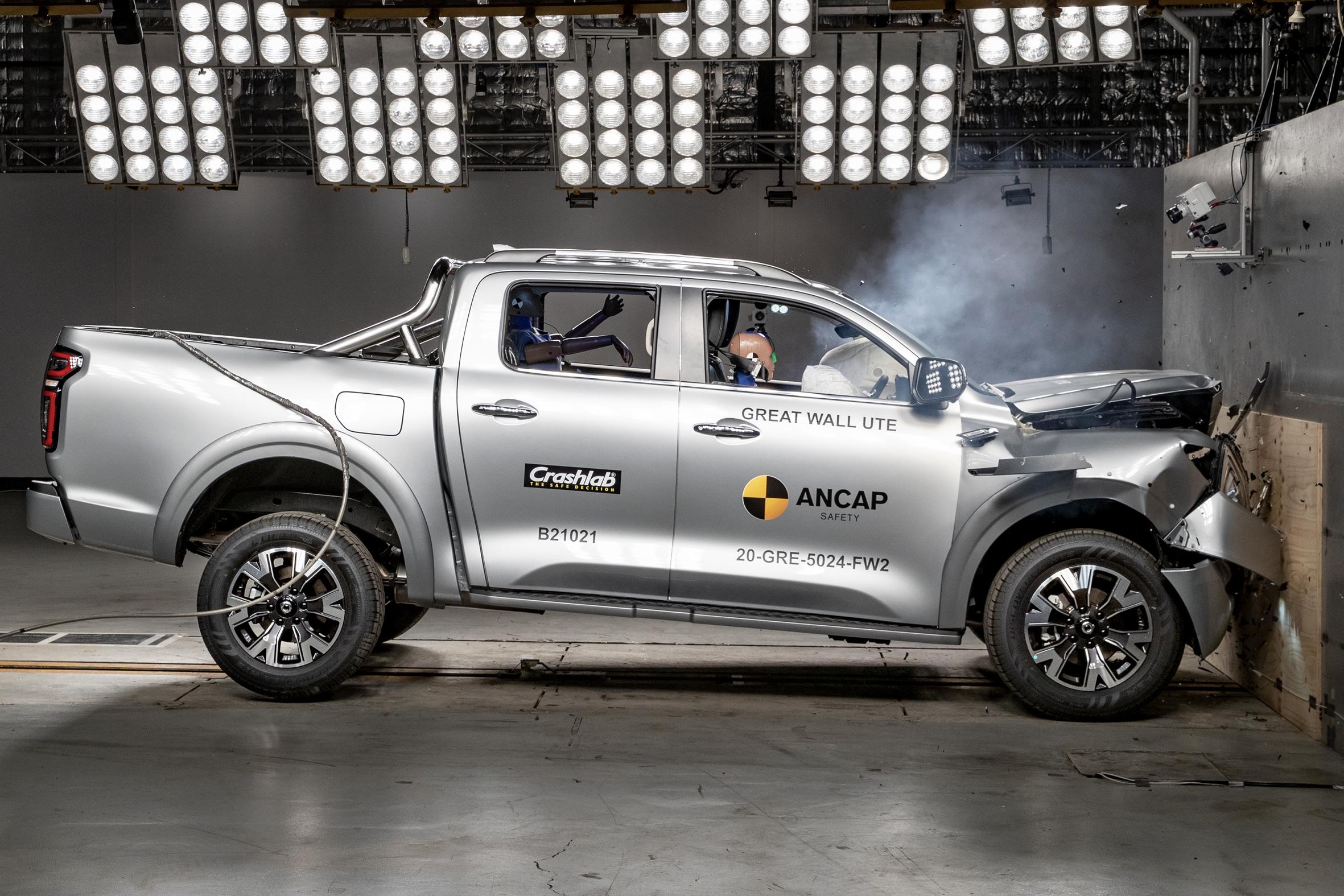
| Category | GWM Cannon |
|---|---|
| Adult occupant protection | 86 per cent |
| Child occupant protection | 87 per cent |
| Vulnerable road user protection | 67 per cent |
| Safety assist | 70 per cent |
Standard safety equipment includes:
- 7 airbags, including:
- Curtain
- Front centre
- Autonomous emergency braking
- Pedestrian detection
- Cyclist detection
- Adaptive cruise control
- Blind-spot monitoring (dual-cab only)
- Driver fatigue monitoring system
- Lane departure warning
- Lane-keep assist
- Lane-change assist (dual-cab only)
- Rear cross-traffic assist (dual-cab only)
- Rear parking sensors
- Reverse camera
- Safe exit warning (dual-cab only)
- Speed warning
- Traffic sign recognition
- Trailer sway mitigation
- Tyre-pressure monitoring
The Cannon Ultra and Vanta feature a surround-view camera and front parking sensors. The XSR has that too, and off-road camera controls as well.
It is worth noting that this range-topping Cannon XSR misses out on emergency lane-keeping, safe exit warning, rear collision warning, blind-spot monitoring, lane-change assist and rear cross-traffic alert with braking… so I guess it’s the most expensive variant but the least “safe”.
All versions have seven airbags, including dual front, front centre, front side, and full-length side curtain coverage for the window seats in both rows.
To see how the GWM Cannon stacks up against its rivals, use our comparison tool
How much does the GWM Cannon cost to run?
GWM offers a seven-year, unlimited-kilometre warranty.
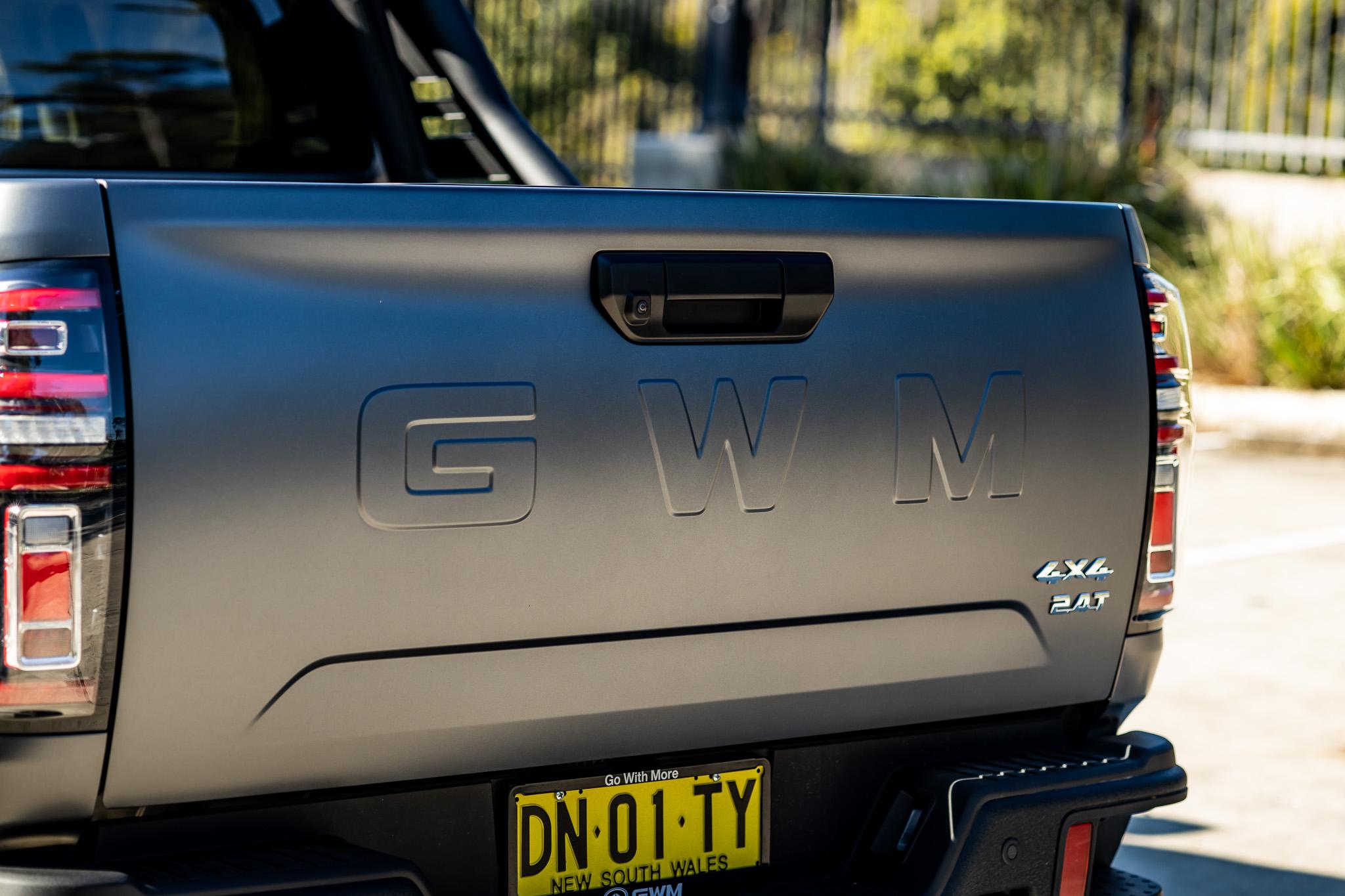
| Servicing and Warranty | GWM Cannon |
|---|---|
| Warranty | 7 years, unlimited kilometres |
| Roadside assistance | 5 years |
| Service intervals | 12 months, 15,000km (except 10,000km first service) |
| Capped-price servicing | 5 years |
| Average annual capped-price service cost | $506 |
| Total capped-price service cost | $2530 |
The service intervals are a little bit strange, but they have been improved compared to the previous model. The first service is due at 12 months/10,000km (previously six months/5000km), and then it’ll need servicing every 12 months/15,000km (previously 10,000km intervals).
There is a capped-price service plan for five years/70,000km, and the average service cost over that period is $506, which is higher than it used to be, and indeed more expensive than some ute rivals.
The brand gives you five years of roadside assistance for free, too.
To see how the GWM Cannon stacks up against its rivals, use our comparison tool
CarExpert’s Take on the GWM Cannon XSR
The GWM Cannon XSR is a dual-cab 4×4 ute that’s ready for the rough stuff, straight off the showroom floor.
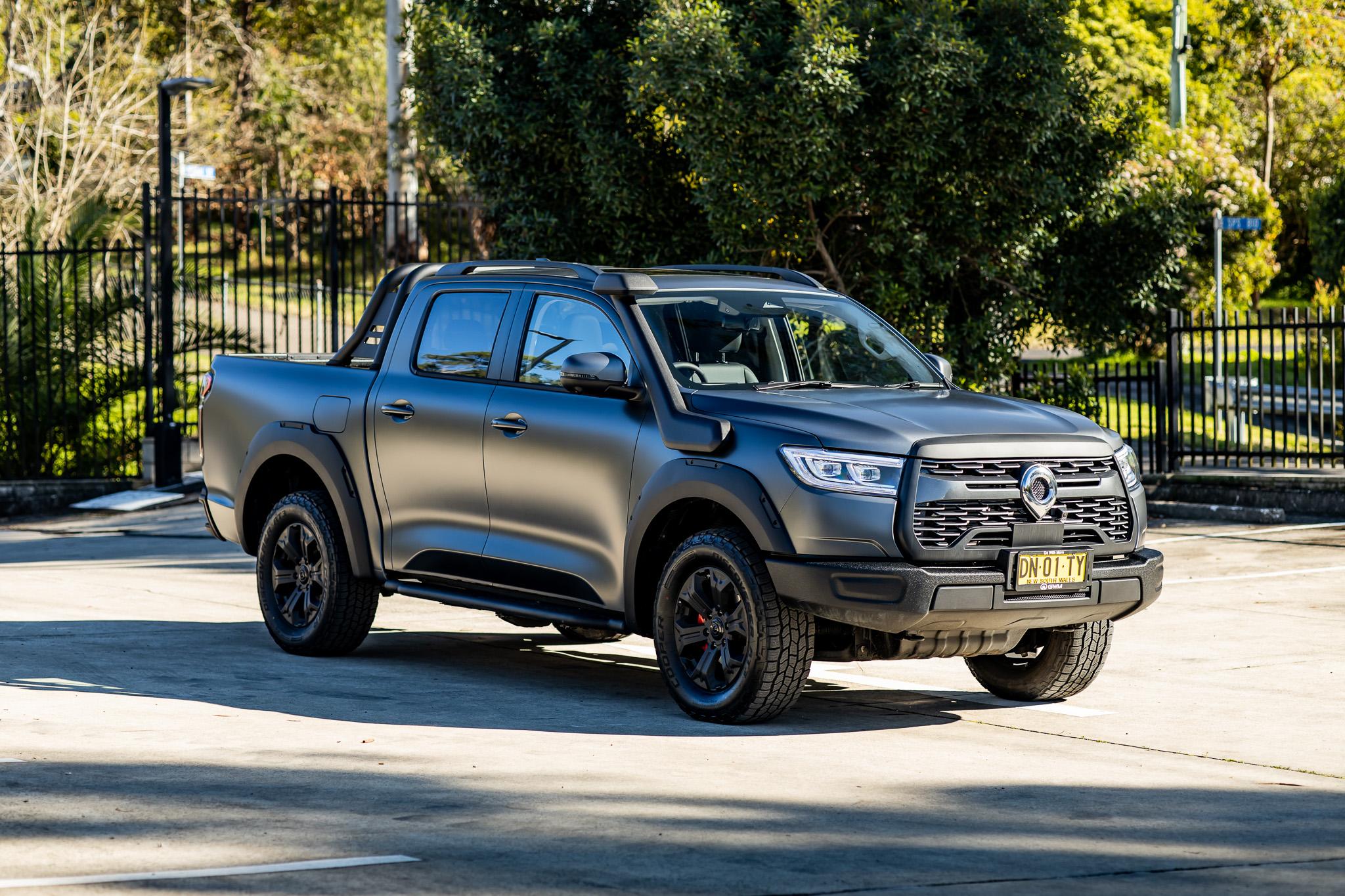
And unlike some rivals, it isn’t ridiculously priced compared to the standard versions.
Sure, it has some shortcomings, but for ute buyers who want a truck that looks tougher and will go further off-road than most, it could be worth a look.
CarExpert can save you thousands on a new GWM Cannon. Click here to get a great deal.
Click the images for the full gallery
